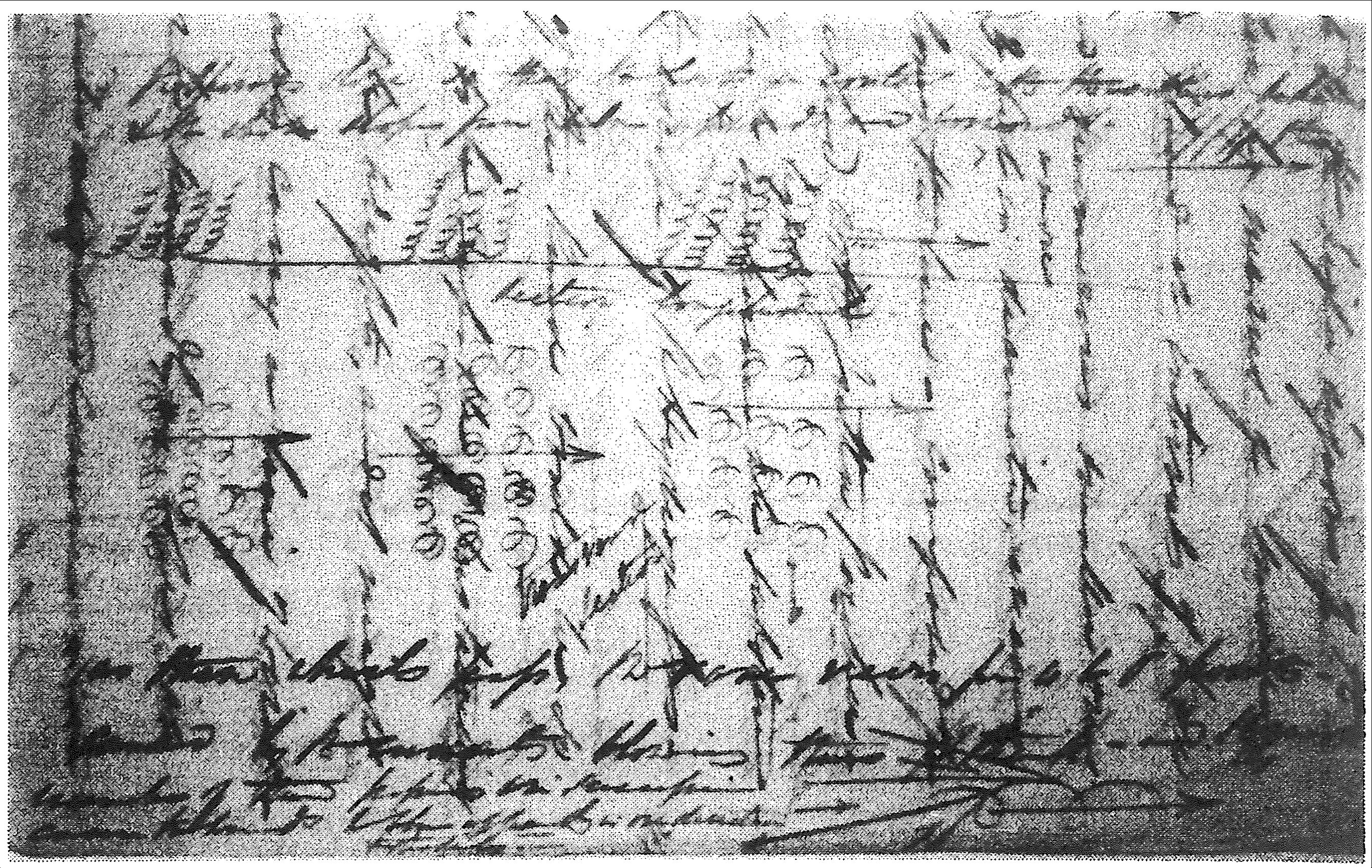Paul Frederick Henry Baddeley to Faraday 4 June 1851
Lahore June 4th 1851
My dear Sir Michael
I think it practical to lay a line of Electric Telegraphs in the air by means of Baloons.
The line should be floated to at least one and a half miles above the surface of the earth, so as to be beyond the influence of the dense atmosphere and the region of the active portion of storms. At that height, the air is so rarefied that the force or power of the wind upon floating bodies, must necessarily be very considerably less than at the earth’s surface, and for the same reason friction would be much less - and progressive motion would not be so much impeded.
The plan seems to preserve many and great advantages over a line laid in the sea, or even on the earth especially for long distances.
1 In the first place, it would be much cheaper.
2. Capable of being carried to an unlimited extent.
3 More easily constructed, and arranged than the sea line.
4 More out of the reach of harm - than either - not so liable to derangement or injury from various causes.
5 And moreover, it might be made a means of safe and expeditious transit.
To explain in general terms the plan I propose I must remark that a strong two inch rope might be easily boyed up to the higher regions of the atmosphere by means of small Baloons placed at intervals of five miles and numerous smaller ones of about 3 feet or more in diameter, at every 100yds along the line - composed of silk varnished with gutta percha or some such impermeable substance to prevent the escape of the Hydrogen gas. A line of this kind would be so boyant as to be capable of sustaining considerable weights, and it might therefore easily carry a line of wire. It might be secured by ropes at every 10 miles and communication established at such points by means of small baloon cars conducted up the communication lines. Frequent fixed points at the earth’s surface would not however be absolutely necessary - but on the contrary, it is probable that the line might be carried more than a hundred miles straight and without any communication with the earth.
Transit might be effected by means of baloon cars attached to the projected line that being nearly of the same sp. gravity as the line itself - might be sustained & guided in their course, without much stress upon the floating line. Mechanical & philosophical science would be brought to bear upon the undertaking, so as to secure success.
Believe me | Yours Faithfully | P. Baddeley | Surgeon Asst
I have many interesting points to tell you about storms & the nature of Dust storms for I cannot find time to arrange my notes - or even to peruse them. In the dust storms there is a mass of Elecl. spirals of limited weight I think limited at least as far as the Dust is concerned, to 1/2 or 3/4 of a mile above the earths surface. This mass may be a broad strip extending for many miles and going at the rate of from 10 to 50 or 60 miles an hour and directed down to the surface from the higher regions.
This mass is composed of innumerable spirals and the gusts and in all cases of storms are occasionally the passage a greater number of these Elecl spirals & in greater force at this particular period & they come on sometimes in regular intervals - thus - In spirals shape so that the part in contact with the earth is behind & the whole slopes from below upwards and forwards ///// thus

As these spirals pass, the vane veers from 4 to 6 points caused by the currents blowing thus I think - and the great number of these passing in succession cause the winds to blow apparently in one direction & steadily
Please cite as “Faraday2431,” in Ɛpsilon: The Michael Faraday Collection accessed on 28 April 2024, https://epsilon.ac.uk/view/faraday/letters/Faraday2431